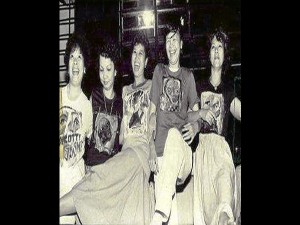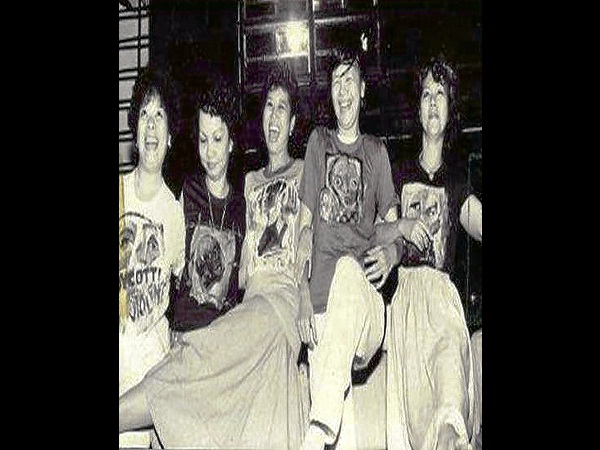
In the time of People Power, on Dec. 5, 1987, a lively gathering was going on at the “in” place at that time, Limelight at the Remedios Circle. Political activists, socialites, artists, bohemians and academicians of all stripes had trooped to the fun district of Malate to toast and roast themselves in the launching of the book, “History of the Burgis.”
It was the brainchild of Gilda Cordero-Fernando to come up with a Philippine history lesson that would both entertain and educate. “Lots of pictures will make people want to look at the book, then maybe they’ll read the text, too,” figured the guru of Filipiniana writing and publishing.
She collared some of her favorite people—a motley group of writers, researchers, artists and jokesters—and made them do what they enjoyed doing: shooting down sacred cows.
The burgis loved it! They didn’t mind being made fun of by their self-avowed fellow burgis. In the next few weeks, it was written up in all the local papers by such journalistic bigwigs as Nick Joaquin, Isagani Cruz, Sylvia Mayuga, Antonio Abaya, Menchu Aquino-Sarmiento, Larry Henares and Mary R. Tagle.
While some picked a few nits with the book, they were all delighted with it and had one exhortation: All self-respecting burgis should read this book (even if they didn’t agree with some of its perceptions and conclusions).
It confounded the burgis, even as it had them doubling up with laughter. It was “high-brow komiks… with weighty content… the most subversive literature off the press.”
It looked like a coffee-table book with “lingerie-peach-tinted covers” but sold for “an almost proletarian P260.” The burgis, who know quality when they see it, were sure such a marvelous book should cost more, but… what’s this? Newsprint pages and soft cover? Ang cheap naman!
Orders rolled in from unexpected quarters. Some high-school and college English classes used the essays as models for expository writing. A frantic mother wanted to know where she could get the book because her fourth-grade son’s history teacher had assigned a lesson from it.
From a university in the south came a polite request to photocopy a chunk of the book for its graduate students. And one day a mysterious buyer bought 100 copies which, rumors had it, were to be used in underground teach-ins by the NDF. Funny book!
Celebration or indictment?
Was it celebration or indictment of the burgis? Well, both and neither. Gilda and friends, like most burgis at the time, had risen to political action in the aftermath of Ninoy Aquino’s assassination. Gilda’s pad had become a discreet staging ground for many an anti-Marcos march. Now it became the lounging area for our weekly “jam sessions,” where guest resource persons representing the political and scholarly spectrum, such as Maita Gomez, Sr. Christine Tan, Michael Tan, Boy Morales and Ting Roxas, helped us understand why our Inang Bayan was in the deep s–t it was in.
My co-author Fe Arriola and I did our work at night, then had to read our manuscripts aloud to the group as soon as we pulled them out of our typewriters (word processing was still a gleam in our eyes then), while wisecracking Manny Arriola, Onib Olmedo and Odette Alcantara carelessly spewed out gems of rib-tickling wit or just plain foolishness. Gilda caught them as fast as she could, scribbling away in her notebook while bidding her maids to bring out more food and drinks. A gleeful Onib whispered to Odette: “Huwag natin tapusin agad… sarap ng pagkain!”
Cora Alvina, Nik Ricio and Babeth Lolarga then mopped everything up with their managerial, book design and editorial skills. As an assistant literature professor with only a few scholarly articles to my name, I was totally intimidated by this chaotic book-making process. Above all, I came to dread Manny and Onib’s gibes at my corporate get-up (I was a language consultant at WHO by day) until Gilda assured me that that was their way of welcoming me to the gang.
The book made quite an impact. Isabel Taylor Escoda felt obliged to assure her Far Eastern Economic Review readers: “The Filipino people are not living in a comic strip.” On the other hand, Mary Ruff Tagle (BusinessWorld) hooted: “If I wanted my history straight, I would have reread Agoncillo.” (WE had re-reread Agoncillo, and Constantino, too!)
Genesis
Under the shadow of the tottering Marcos regime, Gilda, Fe and I had started outlining the book in January 1986, little suspecting that in a month or so Edsa One would overtake us. Despite the euphoria, we were keenly aware that our nation’s problems were far from over.
By September 1987, as we were going to press, Cory had just survived Gringo Honasan’s coup attempt. Disenchantment was beginning to set in. Still, we were determined never to give up on ourselves, and ended the book with the hope that Cory, who was as burgis as they came, would set a new direction for a more enlightened leadership.
But already Sylvia Mayuga (Daily Globe) noted that our book had come in “a new season of political discontent.” Just two days after our chi-chi book-launch, Jaime Ongpin, erstwhile Minister of Finance and one of the chief architects of the Cory government, took his own life following months of deep disappointment with the way things had turned out—after the tremendous sacrifices he had made to ensure an orderly post-Marcos era. The “revolution,” said to devour its own children, had claimed its first burgis victim.
Suddenly, it’s 25 years and five burgis presidents later. So, have we learned anything yet?
In some ways, the burgis are more intensely burgis than ever. Whereas “conscienticized” and “politicized” were the buzzwords of the 1970s and ’80s, the buzzword of the ’90s and 2000s is “lifestyle,” with corollaries such as “condo” and “café.” The burgeoning lifestyle sections of the national dailies and glossy magazines featuring someone’s dream hideaway or fairytale wedding and promoting endless lines of imported beauty products, seem to validate the accusation that the burgis are “suffering from the magnificent delusion that they are the only real people around who count.”
Shift
Yet, who can deny that the burgis have undergone a shift in consciousness? That they have been trying to be part of the solution, not just part of the problem? Today they are cleaning up rivers, segregating their garbage, rescuing animals and streetchildren, building homes for the poor, comforting flood victims, eating tuyo (in olive oil), loving ampalaya and malunggay, and dancing ballet for the masa.
True, they are still maddeningly self-centered and contradictory. “The self-proclaimed nationalist burgis,” quipped Odette, “wants YOU to die for HIS country.” But notable ones have done a Warren Buffet, donating hard-earned fortunes to schools and charitable foundations instead of merely passing them on to their children. The next generation, instead of idly waiting for their inheritance, are making their own contributions to the country’s progress, pushing Philippine name-brands here and abroad, whether in hamburger chains, ice cream, designer furniture or T-shirts. And they are hot on those other buzz words of this era, “corporate social responsibility” and “green business.”
Some hallmarks of the social classes have been scrambled. While you are checked-in at a five-star hotel anywhere in the world, chances are it will be your turn to receive “dole-outs” from our generous kababayan working there as waiters and chambermaids. Yes, whereas travel used to be the privilege of the rich, the ubiquitous OFW is now at home in Milan, Vienna, Paris and Madrid, and may out-communicate you, with your measly 24 units in Spanish and hobbling French. At the same time, Tagalog (or Filipino), the language of the “bakya crowd,” is now almost the lingua franca in the streets of San Francisco, Macau and Dubai. And speaking of language, whereas the burgis used to consider the vernacular fit only for the lower classes, today no self-respecting public official or broadcast journalist can get by without proficiency in our national language.
The hoi polloi, just like the Makati crowd, now sport Gucci, Louis Vuitton and Fendi from the Greenhills tiangge and 168 in Binondo, while the burgis love to show off their five-dollar Rolexes made in Bangkok and purchased on the sidewalks of Manhattan. And while laptops, iPads and Blackberrys remain (so far) the arena of the haves, the cellphone has certainly become that Great Leveler of us all—amo and driver, señora and katulong, boss and sekyu—with the educated class adopting the smart abbreviations of the semi-literate.
‘Burgis’ Senate
Perhaps most telling of how the playing field has leveled burgis “divine rights” is the composition of the Senate. Whereas it used to be a venerable body of brilliant statesmen and lawmakers, in the past two decades it has admitted among its ranks action stars, comedians, newscasters, military adventurers, policemen and undistinguished scions of political families capitalizing on nothing more than name recall.
On the other hand, some senators, whose education and credentials sound impressive, totally lack the basic good manners, proper decorum and moral standards expected of national leaders. It seems we have seen the last of the likes of Diokno, Tañada, Manglapus and Salonga. Nakaka-miss!
Will there be a “History of the Burgis” sequel, we are often asked. Fe and I occasionally toss around ideas for something of the sort, but with Gilda refusing to hear anything of it, and Odette and Onib (and Maita, Sr. Christine Tan, Boy Morales, and others) having moved on to higher causes, we have accepted that the time is past for that. Burgis was one of a kind, the unique product of its time, and cannot be replicated. But the ongoing story of our colorful national journey can be told in other ways by this generation of Pinoys, Chinoys, Fil-Ams, Fil-Mexicans, and what-have-you. As they continue to make ripples in a globalizing world, may self-honesty spiced with lots of humor serve them well!
“History of the Burgis” won the Manila Critics Circle National Book Award for History for 1987 and, according to Gilda Cordero-Fernando, is the only GCF book that has ever made money. It has had seven printings, with 14,000 copies sold and an undetermined number of photocopies. It is now out of print, but some stray copies may still be found in museum shops and second-hand bookstores.









































